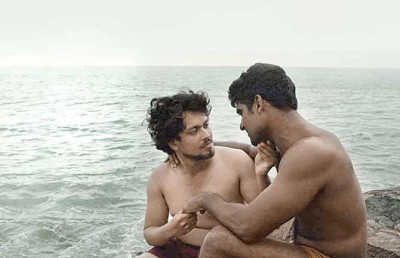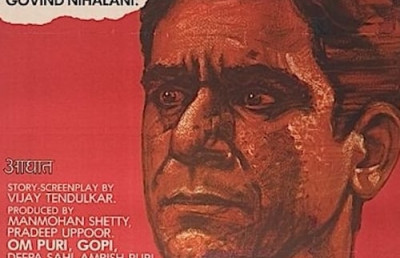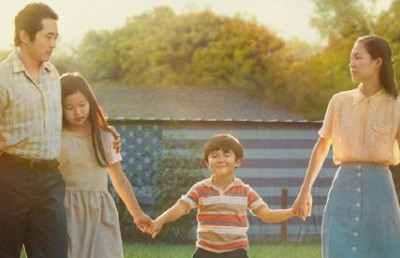Anatomy of Sleazy Bollywood Rapes
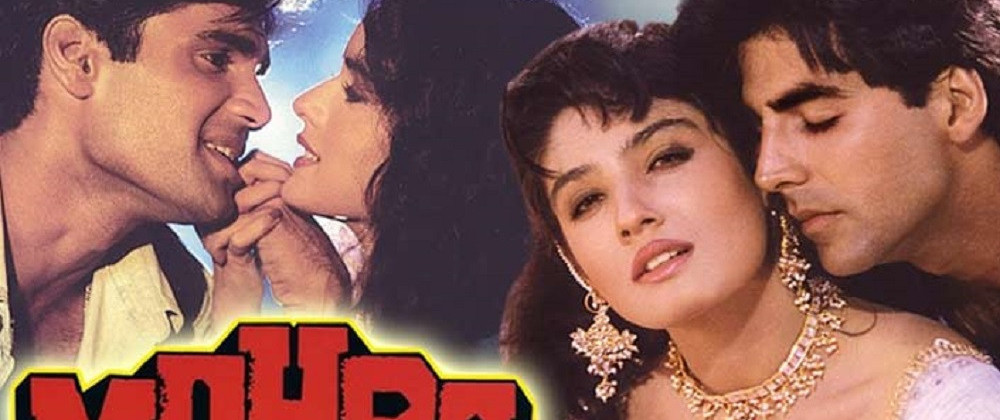
Mohra (photo source, Eros International)
Ye sadiyon se bekhauf sehmee si galiyaan,
Ye masli hui adhkhilee zard kaliyaan,
Ye bikti hui khokhli rangraliyaan,
Jinhe naaz hai hind par wo kahaan hain,
Kahaan hain kahaan hain kahaan hain”
These lanes which have been silenced for centuries,
These crushed, half-bloomed and pale buds,
These hollow past times which are on sale,
Where are those who take pride in being called an Indian?
These lines from the song Jinhe Naaz hai Hind par in Pyaasa (Guru Dutt, 1957) depict the brutality of the flesh trade. (The second line in the above verse describes the desecration of young girls.) Apart from evoking the exploitation of the female body, the song also famously calls out the Indian society for its obdurate avoidance of issues related to sexual mistreatment of women. This evasion is informed by deeply pervading conservative attitudes which shun discussion on sex. It isn’t surprising then that mainstream Bollywood, which sought to frame itself in the image of India, had a problematic history of depicting sexual misdemeanours on screen.
The image of the rapacious monster like Sukhilala in Mother India (Mehboob Khan, 1957), ready to take advantage of the socio-economically vulnerable heroine, had existed since forever. However, there was a change in the manner in which this abuse was depicted during the late 70s to 80s and 90s. The framing of these “rapes” became more sexualized, to the extent that this social ill was deemed an acceptable means of introducing sex on the screens.
The construction of these “rape scenes” didn’t happen in a vacuum but rather was informed by the morality of old Bollywood. In this essay I would like to examine this context while developing an understanding around these salacious sequences and their relationship with Indian society’s treatment of sex. Finally, this article would put forth the “saviour-abuser complex” which was birthed through these scenes.

Mother India (photo source, Eros International)
***
In the decades following independence, Bollywood features existed in pre-defined dogma of good vs. evil. Though the movies dealt with complex ideas or had morally suspect protagonists, there was a clearcut bent in favour of virtuous themes and lofty ideals. These parameters were steeped in traditional morality of a newly independent nation, which had sought to adopt a collectivist approach (mixed economy with socialist characteristics) in the post-colonial era. These were meant as sermons for the masses and ended up defining the role of characters within the film.
The hero often had humble origins and was created in the image of a demi-god: one who has imbibed the innate goodness, forgiveness, truthfulness, honesty and control over senses comparable to Rama or Buddha. There were variants, from the socialist Shankar in Naya Daur (BR Chopra, 1957) who exhorts the power of impoverished men over machine to the good-hearted conman Raj in Shree 420 (Raj Kapoor, 1955) who overcomes his frailties to save the poor, but by and large this simple protagonist was one whom the common man was supposed to identify with and emulate.
These movies became idealistic abodes for their male leads. They’d enjoy strong familial bonding, respect among the common folk, and fulfilling romantic relationships, even if lacking in financial security (this “deficiency” became an additional quality for viewers aware of their nation’s backwardness, especially given their humbler qualities mentioned above). With this status came great responsibilities, which involved taking care of one’s family and service towards society at large. This “man of the house carrying the burden of the world” trope didn’t change with time.
Even later movies like Janam (Mahesh Bhatt, 1985) saw a struggling director lament the idea that his wife was forced to work to make ends meet. To work and provide was a man’s duty, and after the husband becomes a success, the wife dutifully resigns from her job.
The women were an appendage of the hero’s personality. At one level this depicted the real pressures in the Indian society and its gendered roles, as working-class migrant Gangu explains in Deewar (Yash Chopra, 1975) by discussing the need to save money to build a dowry for his sister’s wedding. All the same it was also an exploitative mechanism to validate the hero’s myth, which led to the creation of paper-thin female characters.
Providing for and protecting his family elevated him closer to a semi-divine status, while the women became devices to further this aim. So, there were the helpless mothers, often portrayed by the likes of Nirupa Roy, Durga Khote, Sulochna etc., who were awaiting their sons to avenge a past injustice or improve the family fortunes. There were sisters, whose “incapacity” was amplified at times by giving them forms of physical disability like Sachaa Jhutha (Manmohan Desai, 1970) and Vishwanath (Subhash Ghai, 1978), for the hero to preserve and marry off to a suitable suitor.
It is within these domains that the heroine was constructed. To remain in the shadow of the male protagonist, but also as an instrument of light under whose rays the hero’s qualities were to shine. She was to be as pure, innocent, and unblemished as a Sita. Yet, she was also an adherent of “modernity with Indian characteristics”. This made her a strong proponent of a collectivist identity comprising of family and society.
For this, she could be equipped with weapons of education and a working background, but her primary devotion was towards performing functions as expected of the ideal Indian woman. So, Krishna in Bawarchi (Hrishikesh Mukherjee, 1972) is interested in studies and possesses extracurricular skills but prefers to selflessly serve her extended family. Her only freedom from this servitude comes in the form of her marriage to Arun. While they had a more central role in these safe abodes, this also meant that they suffered from sexual and personal restrictions.
In one of the later verses of the above mentioned Jinhe Naaz hai Hind pe the lyrics compare these ‘degraded’ women akin to Radha, Eve, Yashoda and Zulaykha, the examples of prominent female figures in societal imagination. Yet, Bollywood could never develop a space for these “undesirables” as women whom the male leads would romantically link-up with. If there were any defects in the heroine, they were usually eradicated by end of the film.
Deewar has Roma as Vijay’s love interest. Roma loves to wear western clothes, smokes, drinks, and engages in pre-marital sex with the hero. In the initial stages, she’s defined as a “loose or easy woman”. However, this changes after she becomes pregnant with his child. Her redemption comes when she embraces traditionalism by wearing a Saree and gives up on her previous vices like drinking alcohol.
The ideal hero was expected to protect any woman and the construct of a pious Bhartiya Nari with it, however, the responsibility became even greater when his appendages came under peril. Any attack on “his” females was also an attack on his manliness, which needed to be avenged.
Vishal’s actions in Mohra (Rajiv Rai, 1994) were a particular brutal example of the same, yet they were made “defensible” by the extremely grotesque rape of his sister-in-law. Ankush (N. Chandra, 1986) made things more obvious after the social reformer Anita, the film’s heroine who provided meaning to lives of four local ruffians, is raped. Here the lack of a legal redressal forces them down a path of bloody vengeance.
The late 70s and 80s saw Bollywood get influenced by the rape-and-revenge genre, wherein the heroine herself exacts revenge on her attackers. This was, however, done within the same framework as above. In the absence of a strong male defender (the casting of movies was such that the heroines weren’t paired opposite the A-listers of the era), forced by societal chastening and a broken legal system, she takes the law into her hands. While this affirmed her ability to fight back, the rhetoric around this revenge centred around traditional values, for instance in Insaf ka Tarazu (BR Chopra, 1980), Bharti exhorts the piety of female existence comparing a woman’s body to a mandir (temple) whose primary function is giving birth and child-rearing.
***
The sexual intruders of these traditional abodes carried specific common depravities: uncontrolled lust almost reminiscent of rage, given to evils of alcohol or drugs, and an unquenchable thirst for women. They stood opposed to the emblems of Indianness i.e., the heroes and “their” women.
The first few minutes of Vishwanath show established villain of the day Sudhir attacking a woman and later being served justice by the people’s lawyer, the titular hero portrayed by popular star Shatrughan Sinha. Apart from establishing the heroism of a hero, rape also established the villainy of a villain. Interestingly despite this very obvious linkage to evil in movies, rape became a legitimate instrument to introduce sex for the moviegoers. While the romantic wranglings between main leads could also lead to consensual sex, there was a marked difference in the representation of these two intercourses.
By the 70s depiction of sex through comical flower nuzzles had been replaced by sensual song sequences featuring the leads, it was made sure that this consensual bonding was depicted in a safe manner. Shashi and Julie in Julie (K. S. Sethumadhavan, 1975) cuddle and hug before breaking into a song “Dil kya kare jab kisi ko, kisi se pyaar ho jaaye” the lyrics and action of which emphasise that their union was a matter of heart over body. Similarly, in the song “Jaane kab kaise kahan” from Shakti (Ramesh Sippy, 1982), Vijay and Roma engage in romantic overtures, informed by the lyrics and the choreography before it finally ends in a suggestive embrace (and off-screen sex). In both songs, nature plays an important role in establishing the “normality” of their actions, even when they are premarital sexual encounters.
In some ways this premarital sex was also a deviation from tradition, but this was normalized in eyes of Bollywood morality and its “modernity with Indian characteristics”. Thus, all consensual representations (premarital or otherwise) gained approval through sanction of love rather than lust, and always ended in “secure”, happy sex.
The non-consensual intercourse became the sanctum of lust, sex in them a dirty, unsafe act leading to unhappy results. Its monstrosity is made clear during the attack on police officer Kiran Dutt in Zakhmi Aurat (Avtar Bhogal, 1988) when the assaulters pre-plan their crime on an unsuspecting woman, then go ahead to ambush and brutally assault her in a very disturbing and graphic visualization.
Rape’s status as an unacceptable deviance also made it “UnIndian”. This is stated quite clearly by the soldier (a cameo by big star Dharmendra) in Insaf ka Tarazu, when he justifies murdering a rapist by stating that the attempted act to malign a woman’s chastity stood comparable to an attack on the motherland’s honour. Killing the rapist was merely the soldier’s fulfilment of his patriotic duty. The problem with these rape sequences, however, exacerbated from the late 70s to 90s.
It was ironical that in their moral rhetoric films like Mohra depict rape as a depraved degeneracy which must be corrected by the hero, yet all the while a “sexy” visualization is channelled while the actual act is shown on screen. The helpless woman is drugged and attacked all the while being surrounded by eroticized posters of western women in the carefree environs of a disc. She is groped even as her helpless cries go unheard. The camera focusses on her denuded body, all the while her assaulters make joyous lecherous faces.
Same goes for infamous sequences belonging to Zakhmi Aurat, Insaf ka Tarazu among others. Bollywood sought to use rape as a means to titillate and excite the viewers by making this attack a spectacle. But why? The answer to this perhaps lies somewhere in the complicated views of sex in Indian society.
Open sexualization/free discussions on sex 1 are seen as unwanted foreign introduction among large sections of society, often brought to light through statements by prominent public figures representing interests of powerful groups. In mainstream conversations, sexual misconduct has been linked to westernization 2 , which is been defined as unIndian because it moves away from Indian sanskars (traditions). This alienation from India is then linked to the individual and causes of misconduct found within their personal habits such as pornography, the western attire worn by women 3 , consumption of foreign food 4 and promiscuous conduct 5 (often deemed a by-product of western influence).
The western influence is seen to introduce a modernity minus Indianness, the contact deemed to be beneficial in economic, scientific and political spheres but disastrous in matters of culture and society 6 , wherein western values undermine superior Indian ethos. Westernization and its influences (revealing clothes, carefree physical intimacy) somehow create the image of a lewd form of sex, one which corrupts Indian minds.
At the same time, there are cleavages within Indian society wherein leeway is given to sexual deviance in the name of traditions or culture. This could include corrective rapes ordered by village councils 7 , forced sexual abuse in the name of curing homosexuality sanctioned by guardians 8 and blatant sexual harassment during popular festivals such as Holi 9
These “sanctioned depravities” often go beyond “permissible” boundaries, thus leading to incidents which bring about a clash with the dominant societal attitudes and legal apparatus. For instance, as the new year’s celebrations have become grander and bigger in India, mobs molesting women during New Year’s Eve celebrations 10 is becoming a recurring phenomenon.
At one level, there’s absolutely no difference between molestation experienced at Holi or at a New Year’s party, but the quasi-moral sanction to former lowers the “wrongdoing” in eyes of the perpetrator. The molestation at a New Year’s Eve then becomes more of a taboo conduct.
The intermingling of the supposed western corruption with these sanctioned depravities, gives rise to a contiguous perversity. In the popular narrative, western sexualization, often represented but not restricted to eroticized depictions of white women 11 , is the image of an easy-going sexual conquest. In Jo Jeeta Wohi Sikandar (Mansoor Khan, 1992), the introductory sequence has a group of boys lusting after a scantily clad Pooja Bhatt. Though Indian it is easy to see how Bhatt, seen posing suggestively, has become a part of the western sexualization.
In this conversation, a woman apportions certain amount of blame due to her westernized conduct (drinking, wearing western attire etc.), becoming an “easier” prey in the process, by the fact that she’s putting herself out there in a dangerous situation. On the other hand, the attackers, already given into depravities, find a tingle of “excitement” by engaging in this taboo, of attacking these western “commodities”.
The infamous “rape” movies had several examples of women “putting themselves out there in dangerous situations”. The idea here wasn’t focussed on the fact that the rapists would only attack “modern” women, the attacker wouldn’t care much about his victim’s attire or conduct (as clearly depicted in later instances in Insaf ka Tarazu and Mohra). But the fact that the woman was “modern”, gave easier access to them, even if many of these assaults took place in “safe spaces” like home or office.
The moral core of these movies wouldn’t blame the woman’s attire or conduct directly, but extend the logic of giving “access” to women who worked or frequented social spaces which would’ve erstwhile been considered privileged domains of men. This could be a working model (Insaf ka Tarazu), a school girl looking for work (Insaf ka Tarazu), a secretary (Vishwanath), a police officer (Zakhmi Aurat), or a college going girl going to a party (Mohra).
There was a guise of “majoritarian” social relevancy to these sequences, showed in the movie’s ethical signalling: the rapists would get brutally killed. But when the very assault was depicted on screen, an almost hidden societal dictum came out. As the “modern” woman’s clothes (mini-skirts, jeans etc.) were ripped apart, a “what-if” warning fable played out around “such women” who go out to work, frequent places not meant for them or conduct themselves in a westernized fashion. During this warning, the taboo fetish around westernized women could come to the fore, if only under the guise of “bad men” doing such acts, to further the punishment for such conduct but also to excite the viewers.
***
“Rape as entertainment” ended up creating an interesting phenomenon for the average viewer. They were meant to identify and emulate the idealistic hero, and look in the heroine their respective better halves 12 . If there was any sexual contact, it was edified by societal diktats and was “safe” (usually off-screen as well).
However, with the rape sequences, they found momentary joy and identification in actions of the abusive villain. It was as if these were an outlet for hidden carnal urges, that couldn’t be depicted openly in a society which largely shunned any discussion on sex. The manner in which these sequences were able to titillate the audience under a supposed “moral sermon” wasn’t too different from movies like Reefer Madness (Louis J. Gasnier, 1936) which sought to exploit audience interests in taboo subjects while avoiding censorship laws of USA.
In fact, by the 90s the audience fed on a diet of commercial rape sequences, had become so desensitized to the actual social crime of rape, that they even cheered and enjoyed a “serious” sexual assault on cinema screens. 13 , where the Author discusses an event at a movie screening in the 90s. “Two decades ago Indian audiences, brought up on the rape-as-entertainment paradigm, had controversially reacted to the horrific scenes of sexual assault and forcible stripping in Bandit Queen in the same way that they did to the designed-to-titillate scenes of commercial cinema. Failing to see the terrible humiliation of a helpless human being and focusing only on her nudity, they had hooted, laughed and clapped at the sight.”]]
The popularity of these sequences led to the producers actually inserting these sequences as a means to “sell” their movies to the audience and earn profit. This phenomenon was shown in the brilliant murder-mystery Khamosh (Vidhu Vinod Chopra, 1985), during the “film within the film” rape scene, a young supporting actress (said to be 15 in the film) is sexually abused under the guise of shooting the scene. This critique of Bollywood rape scenes reversed the angles by keeping the assault off-screen even when the girl’s “real” screams are audible, while we get to see the reactions of the male crew. Among them is the director who mechanically orders the actor/abuser to further rip off her clothes and the producer who declares the movie a “super-hit” based on the rape. This association with both the heroic forces as well as the deplorable act of the rapist, led to creation of the “saviour-abuser complex”.
This complex included a kind of “Madonna-whore fusion”. The “pure” heroine or hero’s relative, erstwhile non-sexual at most only romantic being: to be viewed under the veil of traditionality 14 , was dragged out of the safe abode for momentary pleasures of the monster embodying societal ills.
During their degradation, these females became consumable commodities for the audience. The previously sacred, protective love for heroine was made profane, the female who had blundered in a certain fashion (been modern/westernized/consumed illicit substances) was to become the source of sensual joy for the viewers.
There was dislike and hatred for the villain’s act in the movie and society’s moral core, but while these actions took place on-screen, there was also a perverted identification with what the villain was doing 15 Going back to Khamosh again, one of the characters describes the ongoing assault of the child actor as, “Bachhi se Aurat ban rahi hai bhai.” (She’s growing from a kid to woman right now.)
In the same time period, this phenomenon saw a new dimension get added to its tonality when heroes had a shade of “greyness” added to their persona. This was visible in the initial stages of movies, during the cosmetic setup of romantic overtures between heroes and heroines which had the two engaging in some kind of quarrel before madly falling in love. In such instances, the “bold” heroes with temporary streaks of darkness could engage in sexual harassment 16 of heroines in the lead-up to their romance.
While, this had a “fun and giggle” angle in the film’s narrative, the idea was to tame the cocky female protagonist, while also pushing the leading duo from the space of a mere flirtatious couple into more serious romantics by showing the hero’s dedication to cross any boundary to show his “affection”. Again, these sequences blurred the line between Bollywood definitions of consensual and non-consensual contact. Now the hero also became the occasional abuser, creating a further room for recognition among the adulating male viewers.
With time, this would go on to become a sub-genre of obsessed lovers with little regards for consensual interaction. “Abusive” saviours are present in Tere Naam (Satish Kaushik, 2003), Raanjhana (Aanand L. Rai, 2013), Badrinath Ki Dulhania (Shashank Khaitan, 2017) among others.
Thus, even in the post-liberalization era, when the diktats of old Bollywood (collective identity, idealistic heroes, faithful heroines) were undergoing a metamorphosis 17 under influence of relaxed creative freedom and greater availability of western media, a space remained for continued glorification of abusive conduct towards women.
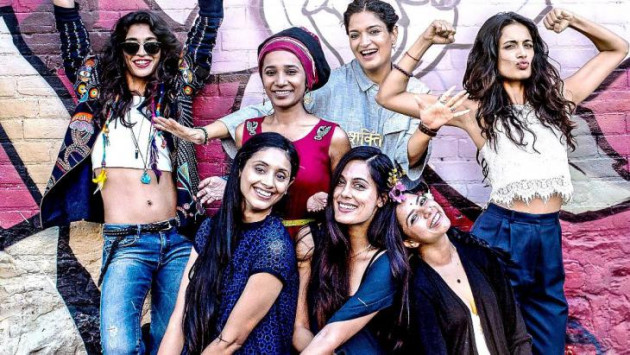
Angry Indian Goddesses (photo source, Logatec)
This is despite the fact that there has been greater sensitivity with respect to portrayal of offences like rape in mainstream Bollywood over the recent years. Over time, the sexually explicit nature of assault sequences (at least in the mainstream industry) has been replaced by portrayals sensitive to the victim. Movies like Pink (Aniruddha Roy Chowdhury, 2016) and Angry Indian Goddesses (Pan Nalin, 2015) have made a strong attempt to address the root cause and supplementary factors related to sexual abuse such as deep-seated misogynistic attitudes and societal patriarchy.
On the other hand, the industry has also gradually become “liberal” in the manner in which it depicts sex on the screen. It finds greater acceptance in the fiction of Bollywood 18 , which today caters to the needs of the urban, educated bourgeoisie. The movies in their looks and attitudes seek to mix the masala (an important ingredient for fetching the masses) with an artificial snobbish sophistication. 19
{media_4}
At the same time, misogynistic attitudes continue almost hand-by-hand. The “item songs”, an erotic sub-category of the usual dance-and-music segment where actresses, especially chosen for the roles, gesticulate suggestively in front of cameras while being surrounded by mostly male dancers, remain an important feature of many Bollywood movies. Many films are still centered around plotlines where the hero is by-and-large looking to protect his “females”. At times, these features suggest that the “flawed” lead, with a knack of stalking and abusing women, is the best possible option for the female lead. Success of films like Kabir Singh (Sandeep Reddy Vanga, 2019) 20 , featuring a confused, sexually abusive, tough guy protagonist fuelled by the engine of toxic masculinity, shows a celebration of the abuser from a hero-worshipping audience.
It is tough to measure the exact impact of cinema on real-life conduct, but there is a contention that there is some linkage between consumption of sexually explicit material (particularly violent) and a number of variables related to sexual violence. 21 What the above shows is that the infamous rape scenes might have by and large gone, but Bollywood continues to service the cloaked perversions of society.
Notes
- “No sex education please, it corrupts, and this is Maharashtra” available at http://archive.indianexpress.com/news/no-sex-education-please-it-corrupts-and-this-is-maharashtra/27130/0. In 2007 Indian state of Maharashtra refused to introduce sex education in schools. The reasoning given includes that Western countries had forced central government to include sex education, which had the potential of spoiling younger generation. ↩
- “RSS Chief stirs row, blames “westernization” for rape available at https://www.deccanherald.com/content/302927/rss-chief-stirs-row-blames.html ↩
- Rapes increasing because of women’s clothes: BJP MLA on Priyanka’s ‘right to wear bikini’ remark available at https://www.indiatoday.in/india/karnataka/story/rapes-increasing-women-clothes-bjp-renukacharya-on-priyanka-gandhi-bikini-remark-1910763-2022-02-09 ↩
- “Haryana khap blames consumption of chowmein for rapes” available at https://timesofindia.indiatimes.com/india/haryana-khap-blames-consumption-of-chowmein-for-rapes/articleshow/16829882.cms ↩
- “Photojournalist rape: Mumbai police commissioner Satyapal Singh ‘promiscuous’ comment sparks ire” available at https://economictimes.indiatimes.com/news/politics-and-nation/photojournalist-rape-mumbai-police-commissioner-satyapal-singh-promiscuous-comment-sparks-ire/articleshow/22118107.cms ↩
- “India is being disrobed by Western culture” available here: https://www.thehindu.com/news/national/india-is-being-disrobed-by-western-culture/article2347570.ece ↩
- “Khap Panchayat Orders Rape of two Sisters in Uttar Pradesh” available at https://www.thequint.com/news/india/khap-panchayat-orders-rape-of-two-sisters-in-uttar-pradesh ↩
- “Parents use ‘corrective rape’ to ‘straight’en gays” available at https://timesofindia.indiatimes.com/life-style/relationships/parenting/parents-use-corrective-rape-to-straighten-gays/articleshow/47489949.cms ↩
- ‘I Felt Helpless’: Why These Women Don’t Play Holi Anymore available at https://www.news18.com/news/buzz/holi-harassment-women-hooliganism-festival-2073785.html. ↩
- “Bangalore New Year: ‘People were grabbing, groping’ “ available at https://www.bbc.com/news/world-asia-india-38504186, “Girls molested on New Year’s Day in Mumbai” available at https://timesofindia.indiatimes.com/city/mumbai/girls-molested-on-new-years-day-in-mumbai/articleshow/2667965.cms ↩
- White Women in the Indian Imagination available at https://kafila.online/2013/06/08/white-women-in-the-indian-imagination-alexandra-delaney/ ↩
- We need not go any further than look at some examples from later Bollywood itself which caricatured this phenomenon. They show the hero and heroine going to the cinema hall, viewing a dance sequence in a “film within the film” and then imagining themselves as the hero and heroine in that song or a similar dream-like song sequence where one character imagines themselves in this situation. Examples include Dil Chahta Hai (Farhan Akhtar, 2001), 3 Idiots (Rajkumar Hirani, 2009). ↩
- Sexual assault is a crime, not entertainment by Radha Rajadhyaksha available at https://www.thehindu.com/news/cities/mumbai/Sexual-assault-is-a-crime-not-entertainment/article14651809.ece ↩
- Dhoom (Sanjay Gadhvi, 2004) shows Ali, one of the two leads, fantasising about his crushes through a montage wherein they are dressed in Indian bridal attire. The comical sequence brings to the fore the idea that heroes (and audience members by linkage) should view and treat their women as soon-to-be better halves. Of course, attitudes changed over time, but this remained very true for early decades (1950s-90s) of Bollywood. ↩
- The hooting and cheering of a sexual assault depicted in an art movie (mentioned above at xiii) is a prime example of this identification. Also, https://www.hindustantimes.com/entertainment/bollywood/makarand-deshpande-reveals-he-shot-a-rape-scene-in-the-90s-and-people-asked-him-did-you-enjoy-it-101653990626994.html. Wherein an actor revealed as to how people asked him if he “enjoyed” doing a “rape scene”. ↩
- Prominent examples include Dil (Indra Kumar, 1990), Ishq (Indra Kumar, 1997). The abusive leads on both occasions are played by popular Indian star Aamir Khan. In both films, he puts the heroines in embarrassing sexual situations in the public. ↩
- The 90s saw a surge of movies which examined a viewpoint that might’ve been seen as diabolical and scandalous only a few years back. Examples include Baazigar (Abbas-Mustan, 1993) where the lead is an unashamed anti-villain, Maachis (Gulzar, 1995) which explores the outlook of those who espoused a separate Sikh state, Fiza (Khalid Mohammed, 2000) which shows the perspective of a girl whose brother turns to terrorism. ↩
- With greater agency given to both male and female characters in sexual conversations along with depiction of divergent attitudes towards sex. Topics such as extra-marital affair: Murder (Anurag Basu, 2004), Gehraiyaan (Shakun Batra, 2022) “casual hook-ups”: Cocktail (Homi Adjania, 2012) etc. are more openly depicted. ↩
- Leads have become more “elitist”. Heroes like ACP Raghav from Raman Raghav 2.0 (Anurag Kashyap, 2016), wear six-packs on their bare-chested body as a matter of norm. He’s a well-educated (has cleared one of the most prominent exams in the country), English-speaking man with degeneracies often seen to be befitting rich kids from big cities (addicted to drugs and alcohol). Contrast this to Vijay from Zanjeer (Prakash Mehra,1973) who was a mere lowly-ranked police inspector, closer to working class individuals. In modern movies even those characters, which belong to humbler middle-class or poor backgrounds, look “elitist”. Example, the chiselled, super buffed Rohan Sachdev from Student of the Year 2 (Punit Malhotra, 2019). ↩
- Kabir Singh: Bollywood’s misogyny problem is not new available at https://www.bbc.com/news/world-asia-india-48754412 ↩
- “Portrayals of Sexual Violence in Popular Hindi Films, 1997–99”, Srividya Ramasubramanian and Mary Beth Oliver, Sex Roles, Pg 329, Vol 48, Nos. 7/8. (April 2003). ↩



